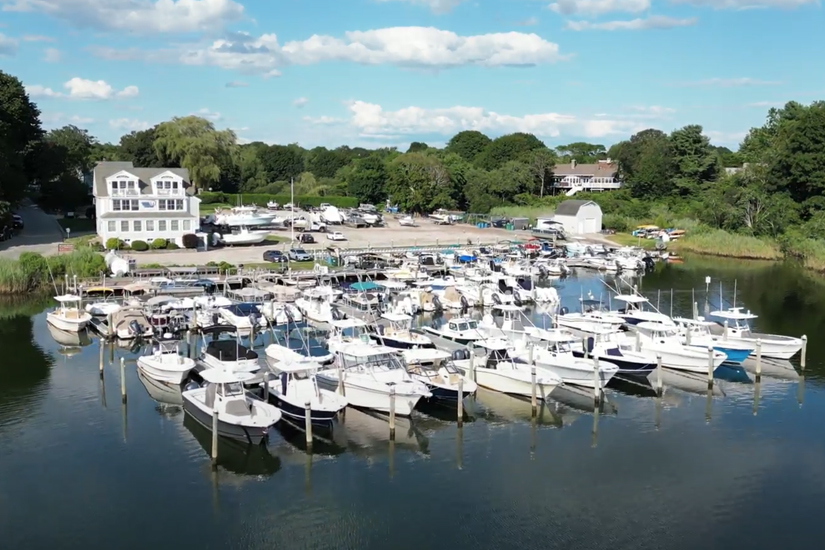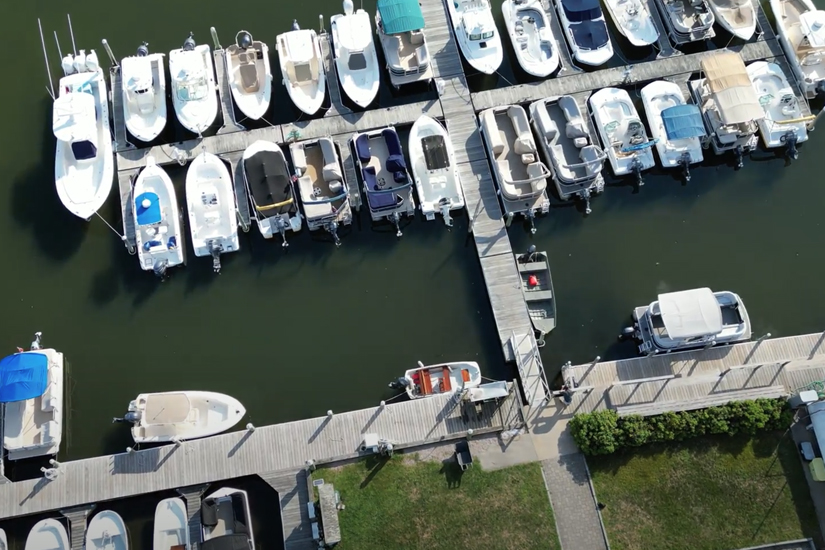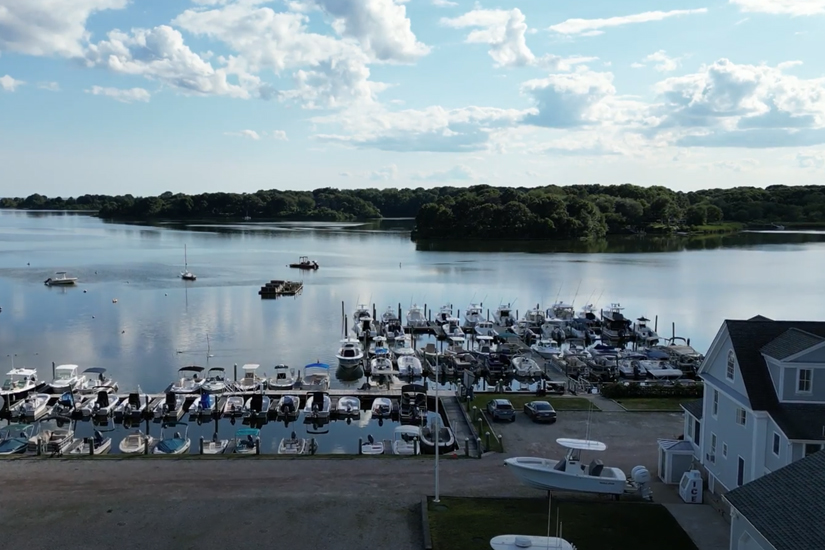That Sinking Feeling
According to insurance statistics, more boats sink when unattended and tied up at the dock than when underway.
What? How can that be? One day the boat is sitting there happily at the dock, and the next morning, it’s swamped and under water.
Actually, such an occurrence is more common than you might think. And the leading cause of boats that sink at the dock is … owner inattention. As one marina owner commented, “You don’t leave a convertible out with the top down. Everything in this world needs to be looked after.”

There are dozens of ways to sink an unmoving boat, and we’ll go over most of them. But the central lesson is that every boat owner needs to pay attention. Even if you’re not going out on the water, you need to visit your boat regularly and check out all its systems and gear to make sure all is working properly.
Rick Wilson, director of boat claims for BoatUS, says that unattended sinkings are often weather related. Heavy rains combined with blocked scuppers can result in flooded cockpits, and the rainwater will eventually find its way into the bilge, often through poorly sealed hatches in the cockpit sole.
Rainwater can also accumulate on canvas covers which can split and collapse under the weight of the water. And a clogged bilge pump or a dead battery (which runs the pumps) can result in disastrous consequences.
Water entering your boat from below isn’t as easy to catch and fix.

Closing the seacocks when you leave the boat can help prevent a lot of problems. Seawater flush toilets can be a problem if the rim of the bowl is too close to the waterline level and there’s no anti-siphon loop in the intake hose. Leaving the intake seacock open can let water seep into the bowl and eventually overflow.
Through-hull fittings also need attention. Scuppers, ice- or fish-box drains, bilge-pump discharges and other places can invite water on board, especially if the boat begins to ride lower in the water. These types of fittings are not usually controlled by seacocks, so it’s important to keep the plumbing updated.
The bilge pumps are a common cause of flooding on a boat. Most bilge-pump switches have a red light that glows when the pump is running, so you can inspect when on the boat. If your light isn’t working, fix it.

You can invest in bilge pump alarms and counters to keep track of the water levels in your bilge, but for true peace of mind we recommend Siren Marine’s Siren 3 Pro boat monitoring system, which will monitor all of your boat’s critical systems 24/7 and send instant alerts to your phone. You can control and track your boat from the palm of your hand and you might even save on your boat insurance.
Remember: your bilge pumps run off your boat’s battery. So it’s important to make sure your batteries are always charged, and that they are producing the correct voltage. The best way to do this is simply by taking your boat out for a spin and watching the gauges.
If you know you’re going to be away from your boat for an extended period of time, invest in a solar panel charger or an onboard battery charger.
This is the time of year to pay extra attention to these important preventive measures to keep your boat afloat. Late in the summer season, the frequency of outings on the boat tend to decline: hey, there’s football to watch!
But this is also the time for tropical storms to attack New England, often with heavy downpours and high winds. Which is also a reminder to pay attention to how your boat is tied up. Best and safest practice is bow out, facing into the wind direction. That will help prevent swamping in case of storm-driven seas.
Here’s a few more things to keep an eye on:
- Inspect auto float switch to ensure its working properly
- Make sure your bilge is clean and free from debris that may negatively impact your pumps ability to operate normally
- Failure of fittings on below water lines
- Forget to close the drain plug
- Failure of bilge pump
- Bilge systems and shower sump pumps generally require 12-18” riser clearance for proper operation.
- Leaky stuffing boxes
- Tidal changes coupled with poor line management. Tie your boat so that it can move up and down in the slip with the changing tides.
- Dirty bilges affecting float switches and contact bilge sensors; floats hung up with debris, and contact sensors too dirty to function properly
Most important of all: visit your boat regularly and make it a habit to inspect the bilge and all the fittings often. As a boat owner, this is your responsibility!

